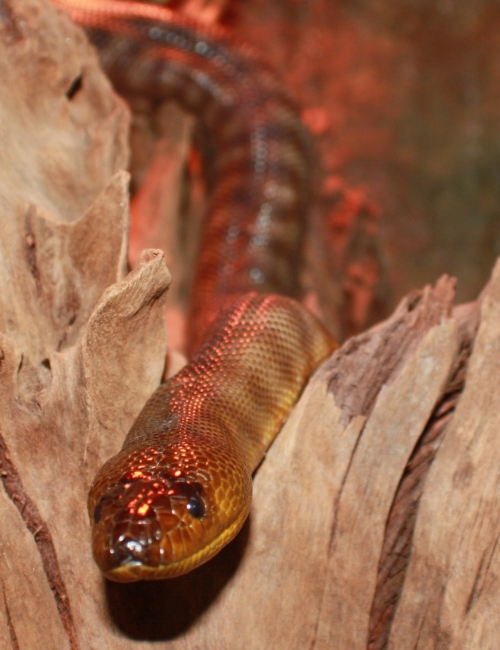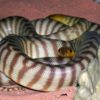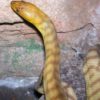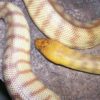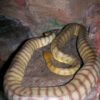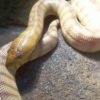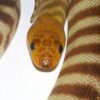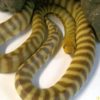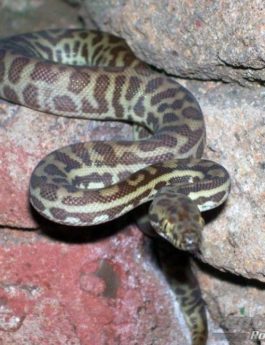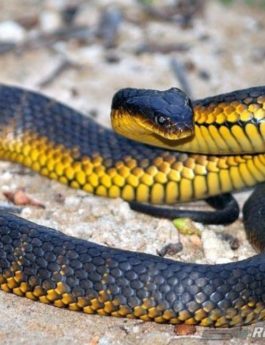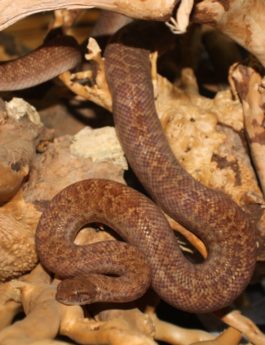Ground colour pale brown, yellowish-brown, reddish-brown to pale olive, marked with numerous irregular darker brown to reddish-brown bands. These may be slightly narrower to broader than pale interspaces and often coalesce on dorsum to form a darker vertebral zone. All aspects of pattern become obscure to absent with age. Juveniles bear a conspicuous dark patch above each eye. This character may be retained to adulthood, especially in populations from south-eastern interior of Qld. Ventral surfaces cream to pale yellow, bearing irregular brownish blotches. TL 2.0m. Distinguished from A. melanocephalus by head-colour (pale vs black).
Shelters largely in abandoned monitor and mammal burrows. Subhumid to arid interior of Australia from north-west coast of W.A., through all mainland states except Vic., to southern Qld.; east to Moonie district. Favours sandy substrates supporting hummock grasslands, woodlands, shrublands or heathland associations.
Terrarium: Woma Pythons do not require an enclosure with very much height, however if given the correct environment with climbing enrichment they will explore their enclosure. The enclosure needs to be large enough to provide multiple hide rocks and maintain a thermal gradient, a terrarium that is 120x60x60cm (WxDxH) would be suitable to house a pair of mature Woma Pythons.
Lighting & heating: UVB lighting is not essential to Woma Pythons, however a low 2.0 spectrum fluorescent globe can be used for viewing purposes. Heating can be provided with a heat tile, mat or cord to maintain a ground surface temperature of 32°C in the hot spot. Ambient heat can be provided with an infrared heat globe to maintain a daytime temperature of 36°C in the warm end and 25°C in the cool end, on warmer days you may not need to turn on the heat globe as the ambient temperature of the enclosure may already be high enough. A thermometer should always be used to monitor the temperature within the enclosure.
Furnishings: It is important to provide your Woma Python with plenty of hide caves throughout, a water bowl at the cool end, and artificial plants will give coverage and decoration. Large Logs and vines can be used within the enclosure to provide climbing enrichment. A pet bedding wood chips such as Chipsi or Critter Crumble can be used as a substrate.
Food in captivity: All captive bred snakes must be fed dead food. A Woma Python will eat a variety of frozen and thawed mice, rats and chickens of appropriate sizes. On average they will have 1-2 food items every 7-10 days.
The essentials:
- Terrarium of appropriate size
- Tummy heating
- Thermometer
- Infrared Heat globe
- Water bowl
- Substrate
- Hide caves
- Foliage for shelter

